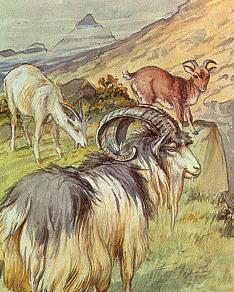
Edith Blackwell Holden (September 26, 1871-April 6, 1920) was a British artist and art teacher, known in her time as an illustrator of children’s books. Much influenced by the Arts and Crafts movement, she specialized in painting animals. Holden was made famous by the posthumous publication, in 1977, of her “Nature Notes for 1906” under the title The Country Diary of an Edwardian Lady. The collection of seasonal observations, poetry, and pictures of birds, plants, and insects, which was never even considered for publication when it was composed, had the nostalgic charm of a vanished world seven decades later. It was a best seller.
Edith’s mother, a Unitarian, was Emma Wearing, a former governess who wrote two religious books, Ursula’s Childhood and Beatrice of St. Mawse, published by the Society for Promoting Christian Knowledge. Her father, a Unitarian, was Arthur Holden, owner of a factory in Birmingham and a philanthropist. Edith’s middle name honoured the pioneer woman physician, Elizabeth Blackwell, also a Unitarian and the Holdens’ cousin. The Holden family attended the Birmingham Labour Church. Like many religious liberals of the 19th century, the Holdens were interested in spiritualism. Mrs. Holden practiced automatic writing.
There were four girls and two boys in the Holden family. Edith and her sisters were given their early education at home. Three of the girls, Edith, Violet, and Evelyn, later received scholarships for their study at the Birmingham School of Art. The two younger, Violet and Evelyn, became illustrators. They collaborated on The Real Princess, published in 1894, and The House That Jack Built, 1895. Effie, the oldest, went to Sweden to study the Arts and Crafts movement. Edith continued her studies with painter Joseph Adam at the Craigmill Art School in Scotland.

During the 1906-09 school years Edith Holden taught at the Solihull School for Girls. She fashioned her “Nature Notes for 1906” as a model for her students’ work. Then, like her younger sisters, Holden became an illustrator. She illustrated four volumes, 1907-10, of The Animal’s Friend, a magazine of the National Council for Animals’ Welfare, and a number of children’s books, including The Three Goats Gruff. Her paintings were often exhibited from 1890-1907 by the Royal Birmingham Society of Artists, and by the Royal Academy of Arts in 1907 and 1917.
In 1911 Edith Holden married Ernest Smith, a sculptor who became principal assistant to Countess Feodora Gleichen. At the Countess’s studio in St. James Palace the Smiths associated with leading artists like Sir George Frampton, sculptor of the statue of Peter Pan in Kensington Gardens, and royal visitors such as King Faisal of Arabia. Meanwhile, Edith continued her career as an illustrator. She died nine years later, in 1920, at the Thames Kew Gardens in Richmond. Collecting flowers from a riverbank too near the water, she drowned in the Thames River.
Sources
The only biography of Holden is Ina Taylor’s The Edwardian Lady: The Story of Edith Holden (1980). Following the publication of The Country Diary of an Edwardian Lady in 1977, a children’s book, The Hedgehog Feast, with watercolours by Edith Holden and a text by her great-niece Rowena Stott, was released the following year. Holden also illustrated Daily Bread (1910) by Margaret Gatty, Woodland Whisperings (1911) by Margaret Rankin, and a series of undated children’s books published by Henry Frowde/Hodder & Stoughton-Animals Around Us, Birds, Beasts and Fishes, The Three Goats Gruff, and Mrs Strang’s Annual for Children
Article by Wesley Hromatko
Posted July 9, 2000